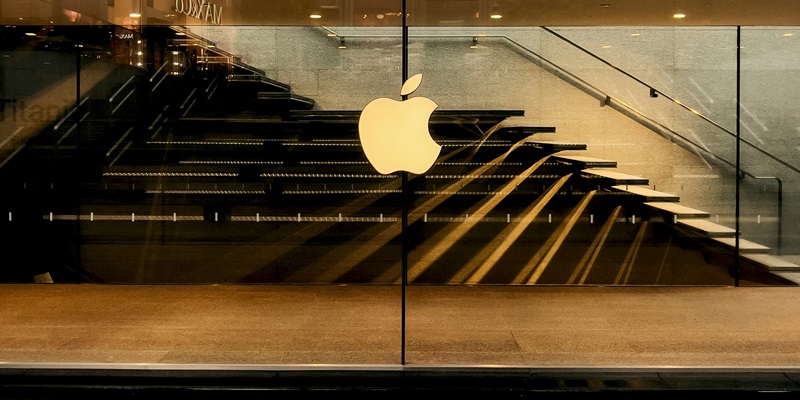MGIE, or Machine-Guided Image Editing, represents a significant leap in the area of digital image manipulation. Developed through a collaborative effort between Apple and researchers from the University of California, Santa Barbara, MGIE stands out for its innovative design that enables the interpretation of natural language instructions into pixel-level image modifications. Unveiled at ICLR 2024, MGIE has captivated the AI research community with its implications for future creative tasks.
The tool bridges the gap between complex image editing software and the user’s intent, operationalizing Photoshop-style commands and localized alterations with unprecedented efficiency. This harmonization of user input with sophisticated AI algorithms has positioned MGIE as a formidable tool in the realm of digital content creation, appreciated for both its effectiveness and practicality.
The Significance of Multimodal Large Language Models in MGIE
From Text to Pixels: Understanding MGIE’s Processing
MGIE, powered by cutting-edge Multimodal Large Language Models, transforms user input into precise editing instructions. The system begins by comprehending the intent behind the user’s plain-language commands. It then creates an internal “visual imagination,” a detailed mental blueprint, to guide the ensuing image modifications.
This technology is adept at deciphering complex language nuances, allowing for highly detailed and specific image edits that were once challenging to achieve. MGIE’s process involves breaking down the command, envisioning the changes, and flawlessly implementing them, whether it’s adjusting the overall lighting of an image or inserting intricate details.
In sum, MGIE represents a breakthrough in image editing, combining natural language understanding with advanced image manipulation capabilities, executing edits with unprecedented accuracy. It is the synergy of language and visual creativity that enables MGIE to realize nearly any conceivable editing task proposed by the user.
A New Benchmark in Image Editing Efficiency
MGIE is revolutionizing image editing by offering a vast array of tools, from simple color adjustments to intricate tasks like object movement and background swapping. This innovation elevates image quality and streamlines the editing process for a user-friendly experience.
Even beginners can effortlessly make advanced edits, circumventing the steep learning curve associated with sophisticated editing platforms. MGIE’s advanced capabilities equip users with the power to effortlessly craft visually compelling images, fostering an environment where creativity thrives without the limitations of complexity.
By integrating simplicity with efficacy, MGIE strikes an exemplary balance, catering to both professional editors and novices. This seamless fusion of functionality and accessibility is what sets MGIE apart, making it a beacon in the realm of image editing, where the expression of artistic vision can flourish unencumbered.
User-Centric Design and Accessibility of MGIE
Democratizing Creative Tools: MGIE’s Accessibility
The open-source model lies at the heart of MGIE, promulgating an ethos of accessibility and collaboration. Hosted on GitHub, its code, data, and pre-trained models are available to everyone, from amateur photographers to professional designers. As a companion to its open-source availability, MGIE provides a user-friendly web demo hosted on Hugging Face Spaces, allowing users of all backgrounds to explore the capabilities of this pioneering tool interactively.
The democratization of MGIE is not merely a matter of convenience but a step towards inclusive technological advancement. By enabling broad access to such advanced tools, MGIE fosters a community of shared knowledge and creative exploration. Enhancing this shared space is instrumental in driving forward the collective understanding and application of AI in image editing.
MGIE and the Broader AI Ecosystem
AI advancements like MGIE are revolutionizing creative industries such as advertising and social media by supporting content creation and visual storytelling. These tools exemplify the growing need for intuitive AI applications that bolster efficiency and imagination in content production.
As we look ahead, AI-enhanced tools like MGIE are set to become fundamental in various fields, championing productivity and spurring originality. MGIE paves the way for a future where the fusion of human artistic skill and AI is fluid and influential, heralding a new era where technology and creativity converge.
Embracing the evolution represented by MGIE, creative professionals can expect a horizon where their work is elevated by AI, molding a landscape ripe with innovative possibilities. This integration of AI within creative processes marks a pivotal moment, delineating a path where human insights and AI efficiency merge to redefine the creative industry.
MGIE: A Paradigm Shift in Creative AI Applications
Bridging Human Intuition with Machine Precision
MGIE marks the dawn of a new creative age, bridging human instinct with the technological finesse of AI in image editing. This fusion expands creative possibilities, allowing a diverse range of individuals to delve into high-level editing, perfectly blending their artistic vision with AI’s prowess.
With MGIE, users exercise the liberty to guide AI in executing complex tasks. The platform’s sophisticated algorithms operate under the users’ creative will, ensuring that their unique touch remains paramount in the creative journey. By doing so, MGIE integrates with the artistic process, bolstering it with machine efficiency without eclipsing the indispensable human touch at creativity’s core.
This symbiotic relationship not only empowers creators but also democratizes high-level edit capabilities. Thus, MGIE stands as a testament to the harmonious partnership of human creativity and AI exactitude, revolutionizing how we approach and interact with our artistic pursuits.
Apple’s Strategic Venture into Instruction-Based Editing
Apple’s collaboration with academia in creating MGIE highlights its investment in advancing machine learning for tangible applications, particularly in instruction-based image editing. This initiative not only showcases Apple’s foresight in tapping AI’s potential within the digital sphere but also indicates a trend in powerful tech-academia synergies. MGIE’s utility suggests a promising future for AI in creativity, hinting at a landscape where technology complements human creativity. The emergence of MGIE implies wider possibilities for tech giants to innovate alongside scholarly institutions, shaping an era where AI’s fusion with creative processes is both natural and sophisticated. This venture might suggest a new era where AI tools are crafted not just for their power but for their ability to resonate with human artistic expression.

